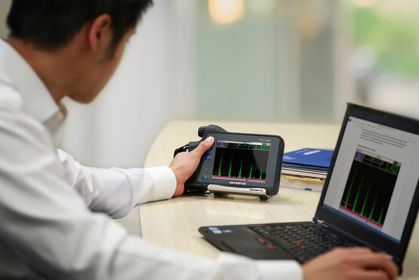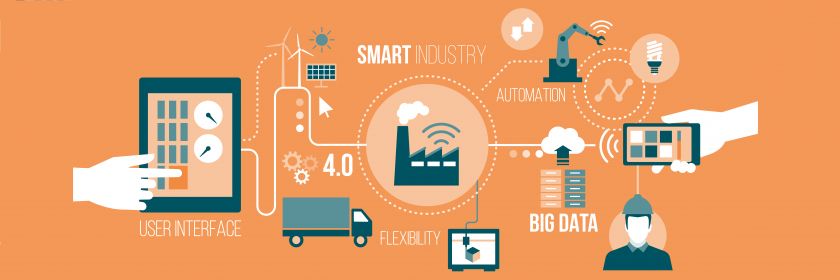What if all your devices could talk to each other? This idea has been around for decades, but technological advances have made this a reality. Now, manufacturers and inspection companies are embracing the digital present and transforming the way they do business.
Put simply, the internet of things (IoT) is the ability of smart connected devices to communicate and share information with each other. While most of us are familiar with the internet of things in consumer products (like refrigerators that automatically add items to the grocery list on your cell phone or lighting systems that you can control with your voice), the internet of things and cloud functionality are becoming increasingly important for industrial inspection. When your inspection equipment can connect to each other and the cloud, it opens the door to new possibilities that can potentially transform the inspection process.
Integrated productivity
Any time decisions can be made using more relevant information, it’s an advantage. The flow of information from connected devices about machines, materials, operations, and the environment provides a tremendous amount of data that can have strategic value. Properly analyzed, manufacturers can use this data to recognize problems sooner, minimizing downtime and improving quality control. The IoT can also improve efficiency by helping organize the supply chain and the flow of components into and throughout the factory. Even small improvements in efficiency can reduce cost.
In a modern smart factory, the lifecycle of a product can be planned out digitally. As new products are manufactured and come online, they need to undergo rigorous testing procedures to ensure quality. In a smart factory, each instrument can talk to the factory and provide information from a variety of sensors, including instrument health. If there’s a fault in a newly manufactured component, the factory is immediately notified, so the fault can be corrected before going through testing, helping streamline the process.
4 ways the cloud will change industrial inspection
Once you have all this information from your connected devices, what do you do with it? This is where the cloud comes in. The cloud refers to software and services that run on the internet. In the consumer space, there are already many popular cloud products including video/photo storage sites and services that enable users to stream movies and TV shows, but the cloud is also affecting industry.
The IoT and the cloud have already begun to reshape manufacturing, and it’s easy to see why. A study from McKinsey estimates that the IoT could have a yearly economic impact of between $3.9 trillion to $11.1 trillion a year by 2025. For inspectors, the cloud has the potential to provide many advantages, but some of the most useful are data storage, software updates, service, and collaboration.
Cloud storage means that you don’t need to keep a large backlog of data files on your instrument or worry about running out of space. Wireless LAN enabled inspection devices can automatically upload data to your cloud service. Once in the cloud, the data is immediately accessible. Wireless data transfer adds additional convenience since users don’t have to physically plug their instrument into the computer and use an interface program to transfer files.
 Accessible data facilitates collaboration. The cloud gives users tremendous flexibility in what they do with their data and makes it immediately available to more people. Sharing data with colleagues back in the office helps facilitate discussion and decision-making.
Accessible data facilitates collaboration. The cloud gives users tremendous flexibility in what they do with their data and makes it immediately available to more people. Sharing data with colleagues back in the office helps facilitate discussion and decision-making.
Another advantage of the cloud is wireless software updates. Software is regularly updated to add improvements and fix bugs. Rather than having to physically plug an instrument into a computer, download the update, and port it over to the instrument, the cloud makes it simple to wirelessly download software updates as soon as they’re available, just like on your smartphone.
Sensors in testing equipment can monitor the health of an instrument, so you know how much each piece of equipment has been used, when it needs to be serviced, and when it was last calibrated. This information helps inspectors avoid surprises due to lags in servicing and calibration. When you do send your equipment in for service, each component can be tracked in the service center, so you get your device back faster.
These features are just a small portion of the potential that the cloud offers NDT inspectors. As the related technologies that make up the smart factory and cloud continue to advance, new cloud-based tools will become available that will continue making inspectors’ jobs easier. Check back regularly to see what we have in store.



